Step-by-Step Guide to Cooking a Thanksgiving Dinner: Timing is Key for Juicy Turkey!
By Bhcguide City Directory | Nov 17, 2024Cooking a Thanksgiving dinner can feel overwhelming, but with a well-structured plan, you can pull it off smoothly. The real KEY to baking a perfect Thanksgiving turkey is not to overcook it—that’s what dries out the meat. Juicy, moist turkey is what everyone looks forward to, and getting the timing right can make all the difference.
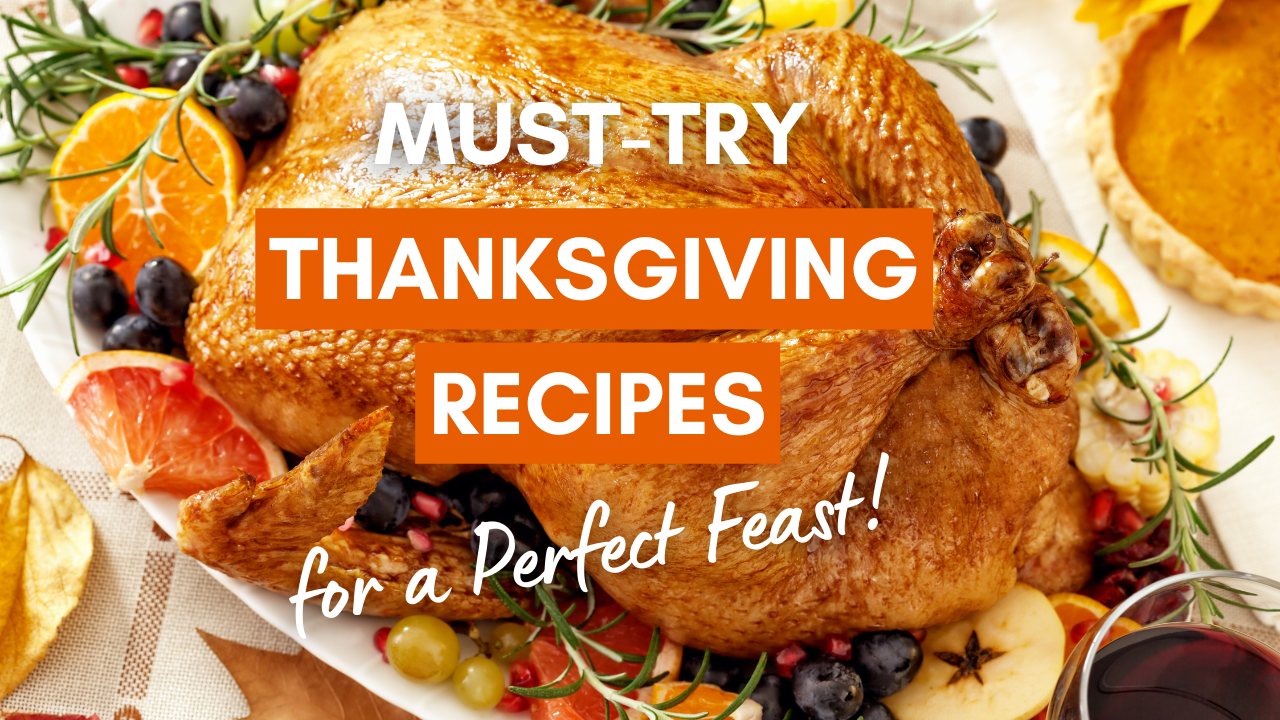
You’ll want to start by crafting your menu well in advance and selecting the best turkey for your gathering. Having clear steps for prepping and cooking will ease the process, letting you focus on enjoying the day with friends and family. Balancing side dishes and understanding how to carve and serve will elevate your Thanksgiving experience.
Remember, the holiday is about more than just the turkey; it's an opportunity to create lasting memories. Planning is your best friend in ensuring everything goes off without a hitch, making the day enjoyable for you and your guests.
Key Takeaways
- Plan your Thanksgiving menu early to avoid last-minute stress.
- Choose the right turkey to ensure a delicious centerpiece.
- Master the timing for cooking and serving to keep your meal on point.
Planning Your Thanksgiving Menu
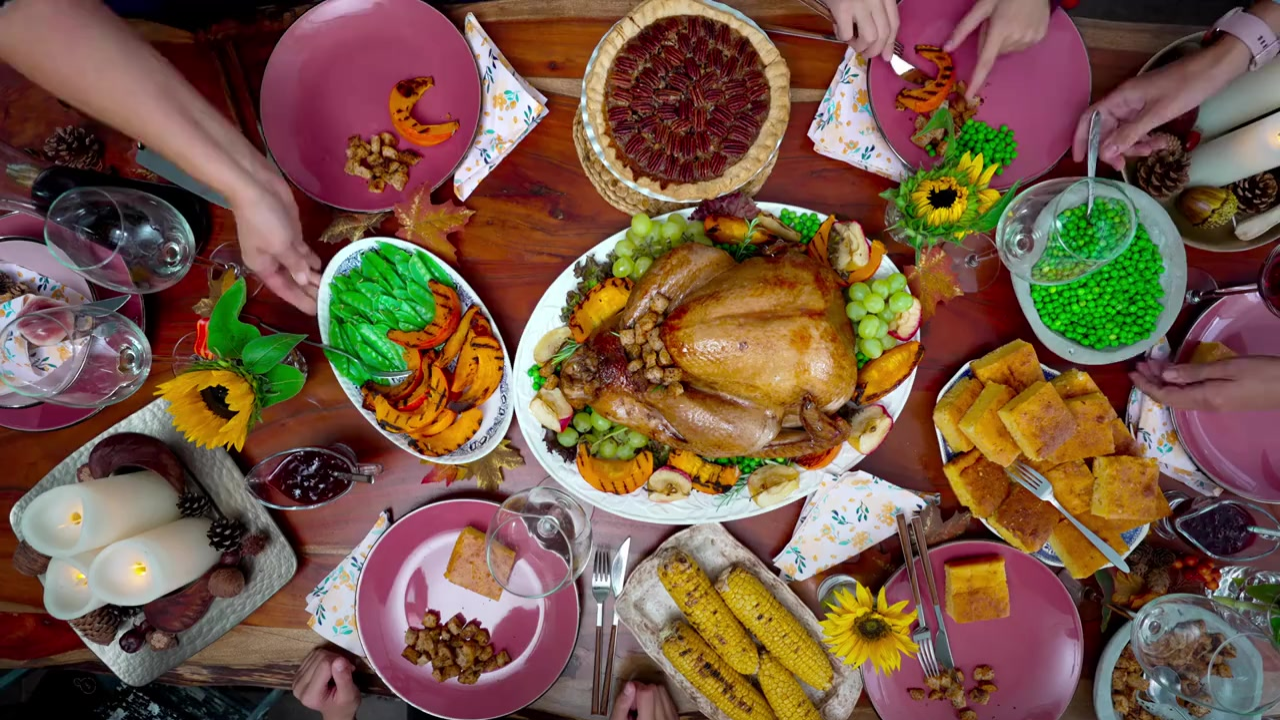
Creating a Thanksgiving menu can be a fun experience. Consider your guests' preferences and dietary restrictions. Aim for a mix of traditional favorites and new dishes.
Suggested Menu Items:
Main Course:
- Turkey (roasted or smoked)
- Ham
Sides:
- Mashed potatoes
- Green bean casserole
- Stuffing
- Cranberry sauce
- Sweet potato casserole
Desserts:
- Pumpkin pie
- Pecan pie
- Apple pie
Make sure to include a variety of flavors and textures. This will keep everyone satisfied and excited.
Timing is Key:
Think about how long each dish takes to prepare. Start with the turkey, as it usually takes the longest. You can prepare many side dishes in advance to save time on the big day.
Prep List:
- Write a shopping list for ingredients.
- Prepare any dishes that can be made a day ahead.
- Set your table the night before.
Staying organized will help you enjoy the day. Remember, this is a time to relax and gather with loved ones. Happy planning!
Turkey Buying Guide
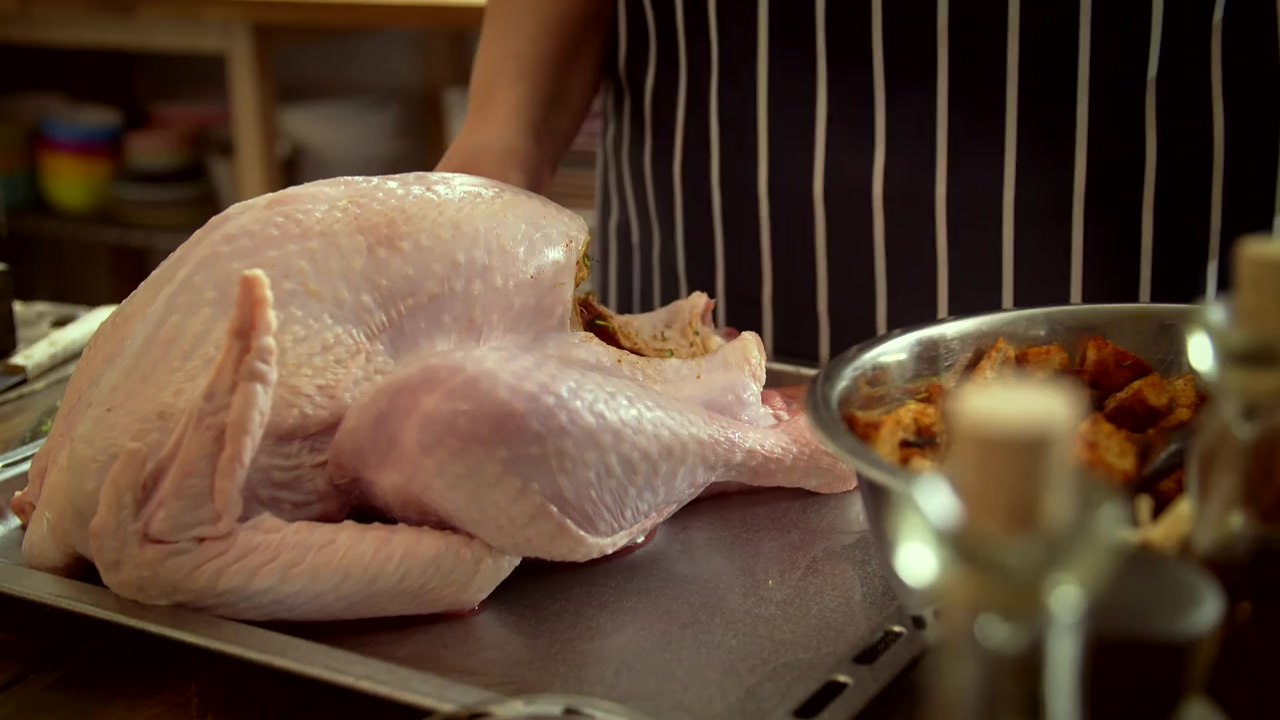
When you’re on the hunt for the perfect turkey, consider a few key factors.
Size Matters
Aim for about 1 to 1.5 pounds of turkey per person. This ensures everyone gets enough, with some leftovers for sandwiches!
Fresh vs. Frozen
- Fresh Turkey: Tends to be juicier and more flavorful. Get it close to Thanksgiving for the best quality.
- Frozen Turkey: Often more readily available and can be purchased ahead of time. Just remember to allow enough time for thawing.
Heritage vs. Conventional
- Heritage Turkeys: These are known for their rich flavor and tender meat but can be more expensive.
- Conventional Turkeys: Generally more affordable and widely available. Still tasty if cooked correctly!
Label Watch
Look for labels like "free-range" or "organic" if you prefer a more humane option. These turkeys are often raised in better conditions.
Buying Tip
Check local stores for sales and promotions. You can often find great deals, especially as the holiday approaches.
By keeping these tips in mind, you’ll be well on your way to selecting the right turkey for your Thanksgiving feast!
Prepping the Turkey
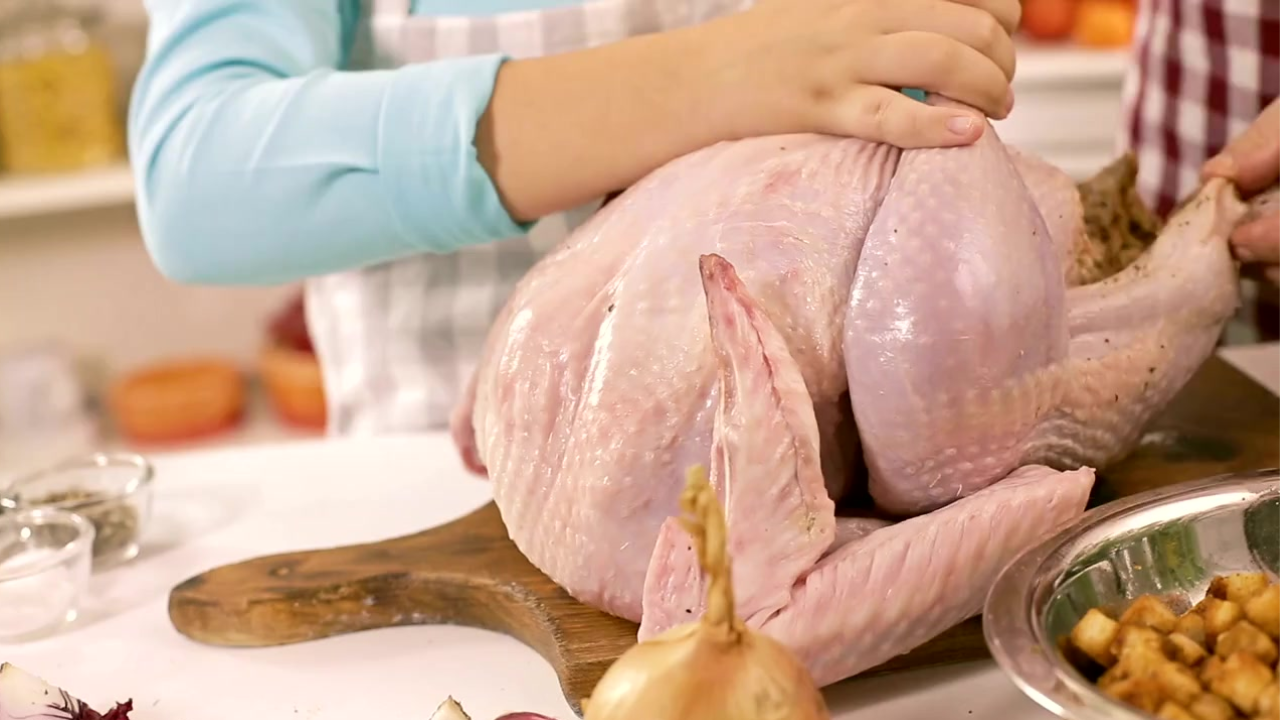
Getting your turkey ready is crucial for a successful Thanksgiving meal. Focus on thawing, brining, and deciding whether or not to stuff the turkey. These steps help ensure you'll serve a flavorful and moist bird.
Thawing the Turkey
Begin thawing your turkey well in advance. The safest way to do this is in the refrigerator. Allow approximately 24 hours of thawing time for every 4-5 pounds of turkey.
If you're short on time, you can use the cold water method. Submerge the turkey in its original packaging in cold water, changing the water every 30 minutes. This method takes about 30 minutes per pound.
Never thaw a turkey at room temperature, as this can promote bacterial growth. Once thawed, keep it in the fridge until you’re ready to prep it further.
Brining for Flavor
Brining adds flavor and moisture to your turkey. You can opt for a wet or dry brine.
Wet Brine: Mix water, salt, and any preferred seasonings. Submerge your turkey in this mixture for 12-24 hours before cooking.
Dry Brine: Simply rub salt and seasonings directly onto the turkey’s skin, letting it rest in the fridge for at least 12 hours.
Whichever method you choose, brining can help combat dryness by ensuring the meat remains juicy during cooking. Rinse the turkey well before cooking to remove excess salt.
Stuffing vs. No Stuffing
Deciding whether to stuff your turkey can impact flavor and cooking time. If you choose to stuff, use a plenty of flavor-packed ingredients.
Ensure your stuffing reaches a safe temperature of 165°F to avoid foodborne illness. If stuffing the cavity, allow extra cooking time, typically 30 minutes to an hour.
Alternatively, cooking stuffing separately can help your turkey cook more evenly and reduce the risk of drying out the meat. Plus, it allows for more flexibility with flavors as you can customize the stuffing without impacting the turkey.
Cooking the Turkey
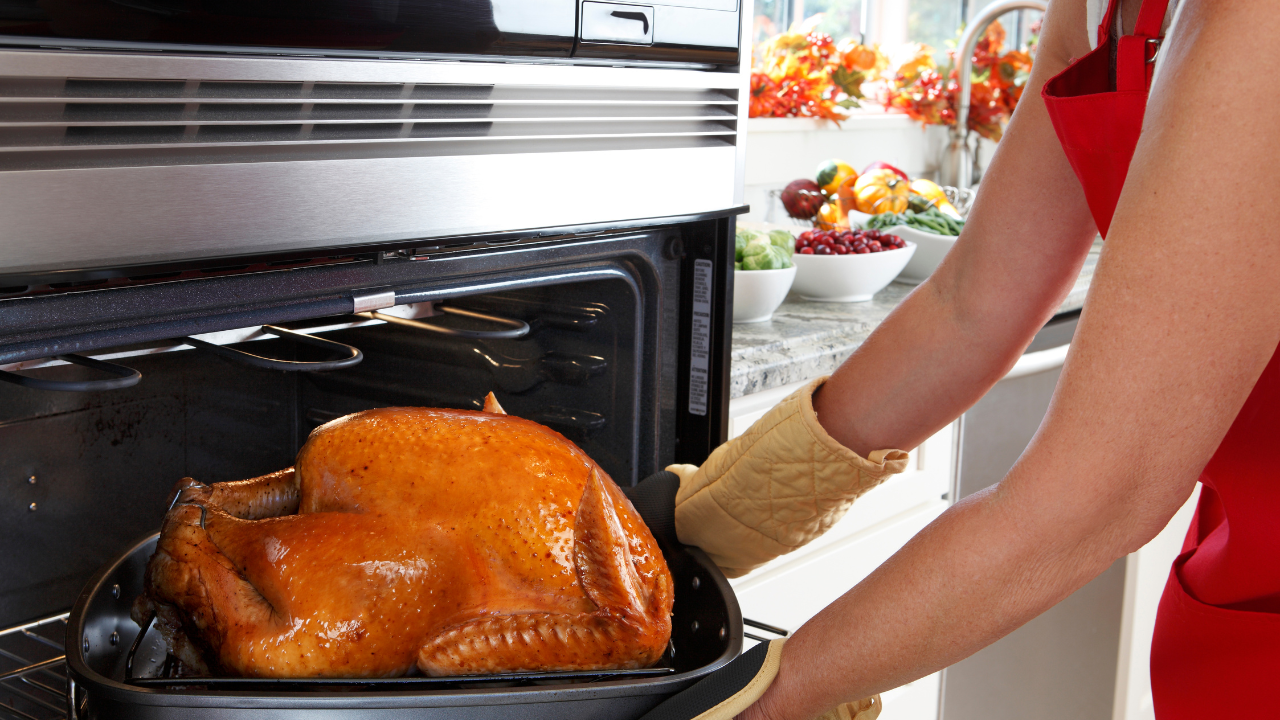
Getting your turkey ready is all about the right techniques and flavors. You'll want to ensure it's seasoned well, roasted to perfection, and basted correctly to keep it juicy.
Seasoning the Turkey
Start with a generous seasoning approach. Using salt is essential. It helps enhance flavor and tenderizes the meat. Consider a mix of herbs like rosemary, thyme, and sage for that classic Thanksgiving taste.
You can also rub some butter underneath the skin for added richness. Don't forget to season the cavity. Fill it with aromatics like onions, garlic, and lemons, which will infuse flavor as the turkey cooks.
Let it sit for at least an hour—ideally overnight in the fridge—to really let those flavors soak in.
Roasting Techniques
When it comes to roasting, you have a couple of choices: high heat and low heat. A common method is starting at a high temperature (around 450°F) for the first 30 minutes. This helps crisp the skin, then reduce to about 325°F for the remainder of the cooking time.
Use a meat thermometer to check the internal temperature; you’re aiming for 165°F in the thickest part of the breast. Keep an eye on the time based on the turkey weight, roughly 13-15 minutes per pound.
Don’t forget to check the pan periodically. If it looks dry, add a bit of broth or water.
Basting the Turkey
Basting is key to keeping the turkey moist and flavorful. Use the drippings from the turkey itself or a mixture of broth and butter.
Baste every 30-45 minutes once the turkey is in the oven. This helps to create a golden, crispy skin. Move quickly when you open the oven to maintain the heat.
Consider tenting the turkey with foil during the last part of cooking if it’s browning too quickly. This will help prevent burning while ensuring that everything cooks evenly.
Timing Is Everything
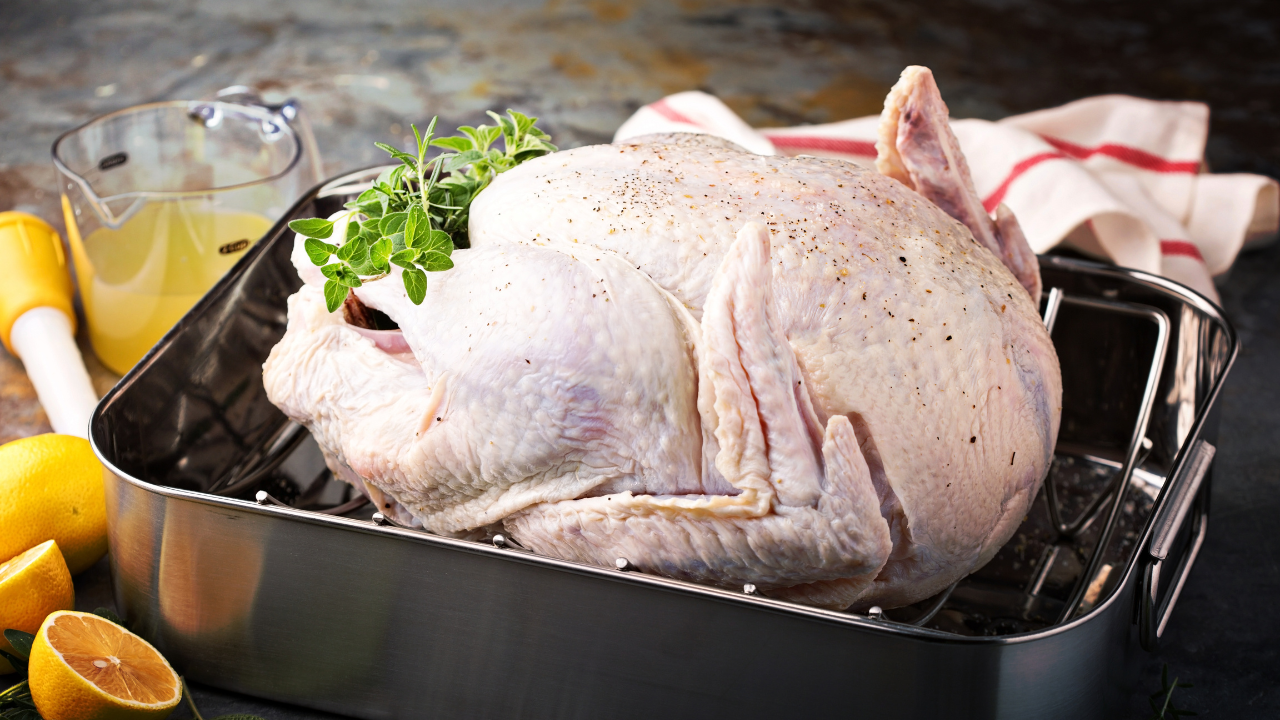
When cooking a Thanksgiving dinner, timing is crucial. You want everything to be ready at the same time, and this includes your turkey, sides, and desserts.
Start by figuring out how long the turkey will take to cook. A general rule of thumb is 13-15 minutes per pound if you’re roasting it at 325°F. This means if you have a 16-pound turkey, you’re looking at around 3.5 to 4 hours of cooking time.
Here’s a simple table to help with planning:
| Item | Cooking Time | Notes |
|---|---|---|
| Turkey | 13-15 minutes/lb | Rest for 30 minutes after cooking. |
| Stuffing | 30-45 minutes | Cook inside turkey or separately. |
| Mashed Potatoes | 20-30 minutes | Start boiling water early. |
| Green Beans | 10-15 minutes | Steam or sauté fresh. |
| Pie | 45-60 minutes | Bake while turkey rests. |
To ensure everything is hot and ready, plan to start cooking the sides as the turkey approaches completion.
Remember to leave time for resting the turkey. This lets the juices redistribute and makes carving easier. Timing your dishes to finish just before the turkey is done allows you to serve a delicious, hot Thanksgiving meal.
Side Dishes
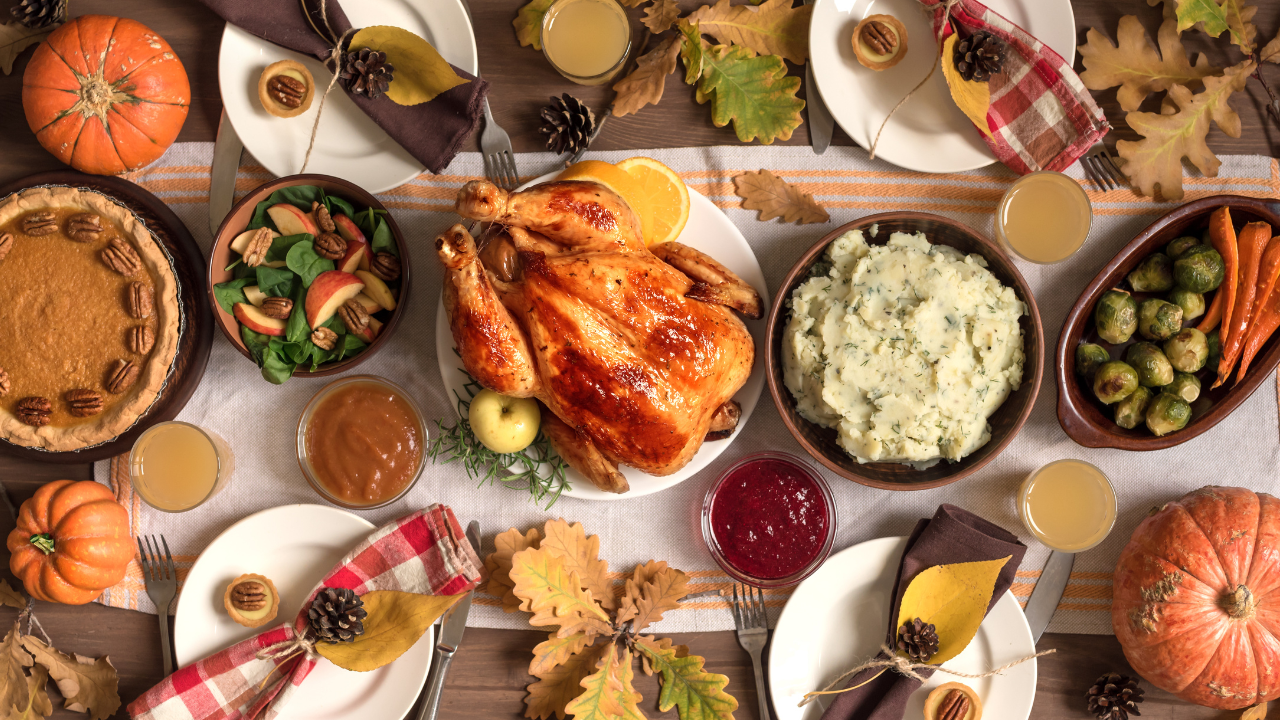
Side dishes are essential to a Thanksgiving dinner, adding flavor and variety to your meal. Three classics stand out: Classic Stuffing, Mashed Potatoes, and Cranberry Sauce. Each plays a unique role on the table and complements your turkey perfectly.
Classic Stuffing
Classic stuffing is a must-have for Thanksgiving. Start with stale bread cut into cubes for the best texture.
Sauté some onion, celery, and garlic in butter. Then, mix in your bread cubes, along with herbs like sage and thyme for flavor.
Add chicken broth gradually to moisten the stuffing without making it soggy. You can also throw in some chopped apples or dried cranberries for a sweet touch.
Bake it covered for about 30 minutes, then uncover for another 15 to get a delightful crispy top. This side dish not only absorbs the turkey juices but also rounds out your holiday spread.
Mashed Potatoes
Mashed potatoes are a comfort food favorite during Thanksgiving. Choose starchy potatoes like Russets for creamy results.
Peel and chop them into even pieces for uniform cooking. Boil until tender, then drain and return to the pot.
For the perfect mash, add warm milk and butter, which helps achieve that fluffy consistency.
Season generously with salt and pepper. Don’t forget to whip them until smooth and creamy. Topping with a sprinkle of fresh herbs or a pat of butter can elevate this simple side dish.
Cranberry Sauce
Cranberry sauce adds a vibrant pop to your Thanksgiving plate. It’s refreshingly tart and balances rich flavors.
Start by rinsing around 12 ounces of fresh cranberries. Combine them in a saucepan with one cup of sugar and one cup of water.
Bring it to a boil, then simmer until the cranberries burst and the sauce thickens. This usually takes about 10 minutes.
For added flavor, consider mixing in orange zest or a dash of cinnamon. Allow it to cool before serving for the best texture and taste.
Cranberry sauce is not just a side; it's a tradition that completes your Thanksgiving feast.
Setting the Table and Serving
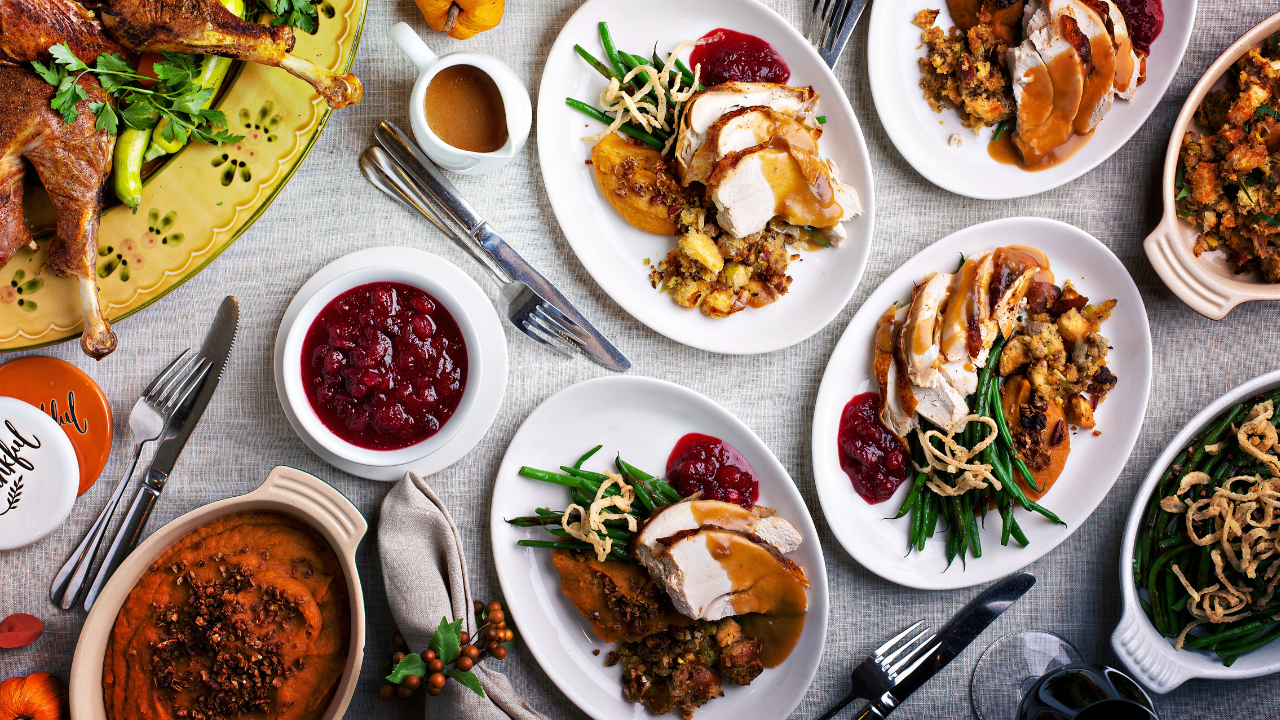
Setting the table for Thanksgiving is all about creating a warm atmosphere. Start with a clean tablecloth and consider a festive centerpiece. Simple decorations, like candles or seasonal flowers, can make a big impact.
Place Settings:
- Plates: Use dinner plates for the main course and smaller plates for appetizers.
- Utensils: Forks on the left, knives and spoons on the right. Don’t forget dessert forks!
- Glassware: Include water glasses and wine glasses. You might want to differentiate based on your drink options.
Make sure to arrange everything neatly. You can use place cards for guests if you want to add a personal touch.
When it comes time to serve, timing is key. Start by serving appetizers while guests mingle. Once everyone is seated, serve the turkey and sides.
Serving Order:
- Carve the turkey and offer it first.
- Follow with sides like stuffing, mashed potatoes, and green beans.
- Don’t forget the gravy and cranberry sauce!
Encourage guests to help themselves or serve family-style. This keeps the atmosphere casual and inviting.
Make sure to have drinks readily available, too. Keeping the beverages flowing throughout the meal adds to the festive vibe. Enjoy the moments shared around your beautifully set table!
Carving the Turkey
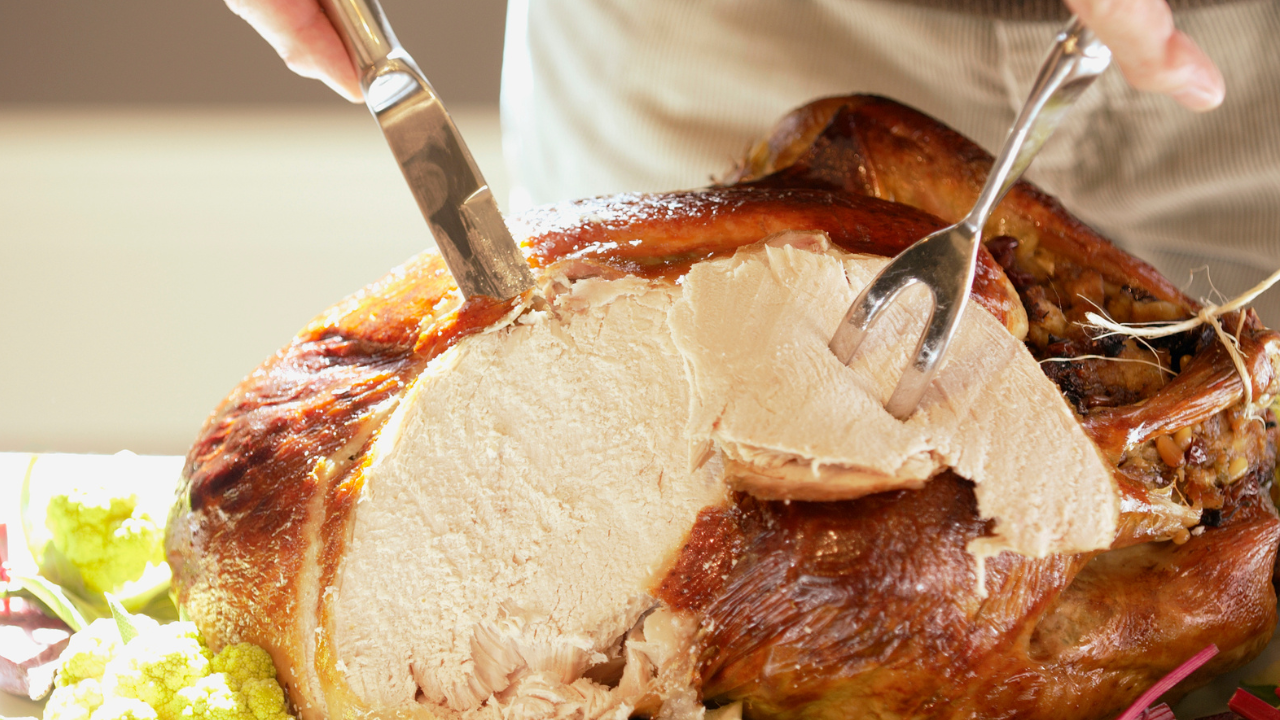
Carving your Thanksgiving turkey can seem daunting, but with a little practice, you can master it. Start by letting the turkey rest for at least 20 minutes after it comes out of the oven. This helps keep the juices inside.
Gather your tools: a sharp carving knife and a sturdy cutting board. If you have one, a carving fork is helpful for steadying the bird.
Follow these steps:
Remove the legs: Hold the turkey steady with the fork. Cut through the skin between the leg and the body, then bend the leg back until the joint pops. Cut through the joint to separate it from the turkey.
Carve the breast: Make a long, even cut along one side of the breastbone, slicing down toward the ribcage. Use your knife to cut slices of meat away from the bone. Repeat on the other side.
Slice the dark meat: If you prefer, you can carve the thigh and drumstick together or separate them. Carve down towards the bone, making even slices.
Arrange the meat: As you finish slicing, place the bird's meat on a platter. You can mix light and dark meat for variety.
You’re ready to serve your beautifully carved turkey. Enjoy!
Thanksgiving Leftovers
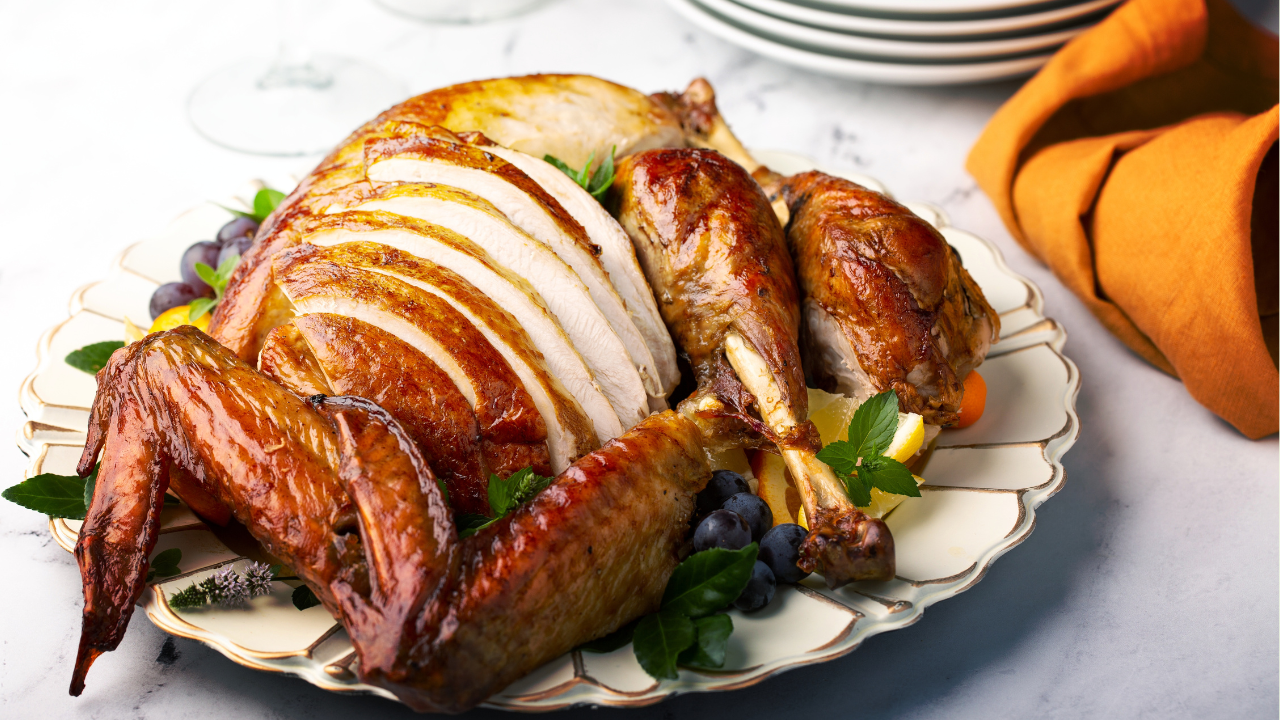
Thanksgiving leftovers can be just as exciting as the main meal. With a little creativity, you can transform your extra turkey and sides into delicious new dishes.
Ideas for Leftovers:
- Turkey Sandwiches: Layer sliced turkey with cranberry sauce and stuffing on your favorite bread.
- Turkey Soup: Simmer turkey bones with veggies to make a hearty soup.
- Casseroles: Mix turkey with green beans and cream of mushroom soup for an easy casserole.
Storage Tips:
- Store leftovers in airtight containers to keep them fresh.
- Refrigerate within two hours of serving to prevent bacteria growth.
- Most leftovers are good for about 3-4 days.
Reheating Tips:
- Reheat turkey in the oven at 325°F to keep it moist.
- Use a microwave for quick meals, but cover dishes to retain moisture.
- Add a little broth or gravy when reheating to enhance flavor.
Get creative and enjoy those leftovers! By using them thoughtfully, you can extend the joyful spirit of Thanksgiving.
Frequently Asked Questions

When it comes to cooking Thanksgiving turkey, you likely have some burning questions. Here are answers that will help you achieve a delicious, moist turkey this holiday season.
What's the trick to getting a turkey really moist when baking?
The key is to avoid overcooking. Basting the turkey with its own juices during cooking can help. Additionally, letting it rest after baking allows the juices to redistribute, making each slice juicy.
Any tips for a first-time turkey chef?
Start with a smaller turkey if you're nervous. Make sure to read through your recipe several times. Having all your ingredients and tools ready will make the process smoother.
How long should I keep the turkey in the oven?
Cooking time can vary based on the turkey's size. A general rule is to bake it for 13-15 minutes per pound at 325°F. Always use a meat thermometer to check for doneness.
Got a killer Thanksgiving turkey recipe to share?
A classic approach is to season the turkey with salt, pepper, and butter. You can stuff it with herbs, garlic, and onions for added flavor. Don’t forget to baste it throughout for maximum moisture.
What's a good way to add some pizzazz to my turkey recipe?
Try adding citrus slices or fresh herbs like rosemary and thyme under the skin. A glaze of honey or maple syrup can create an appealing finish as well.
What temperature ensures a turkey is cooked but stays juicy?
Aim for an internal temperature of 165°F in the thickest part of the breast. Cooking it slightly lower, around 160°F, and letting it rest will also help keep it juicy.